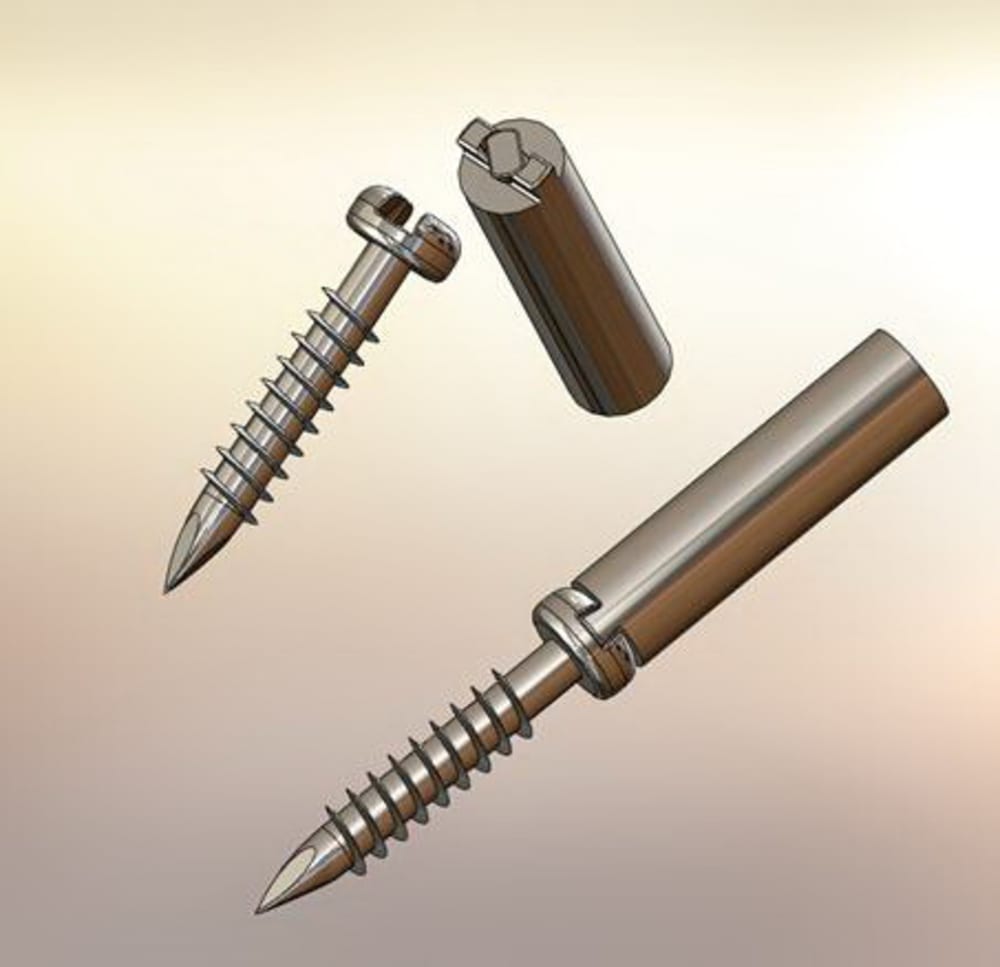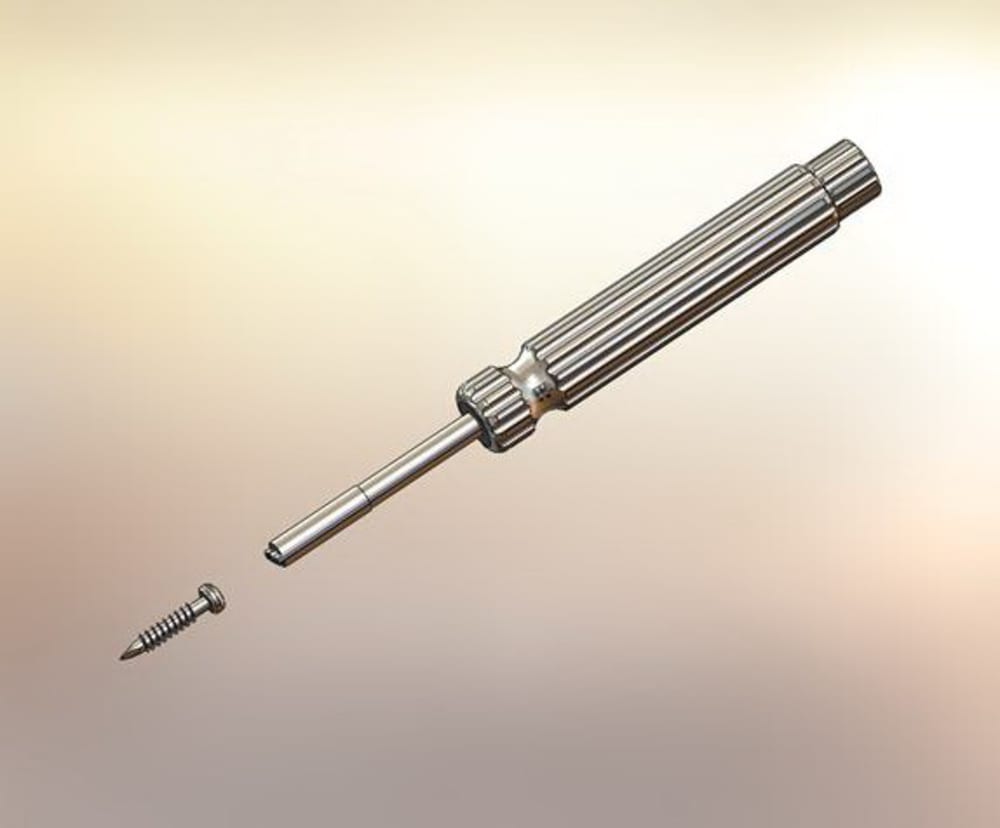High Plains Technology Group was formed to develop new equipment for orthopedic medicine. We polled a number of orthopedic surgeons and asked them to pose their most difficult problem. The vast majority described problems with surgical fasteners. The difficulty of either inserting or removing fasteners easily led to additional procedure time, increased risk of contamination and infection, and the potential for additional patient trauma.
We analyzed the design of existing driver – fastener systems and realized that virtually all of them share the same inherent flaw. As the user attempts to apply additional torque, the contact area between the fastener and the driver decreases, decreasing the torque transmitted to the fastener and resulting in cam-out and potential damage to the fastener, making removal difficult or impossible and leaving metallic debris in the wound.
Our solution, illustrated in Figure 1, was to redesign the driver – fastener interface so that an attempt to apply additional torque increases the contact area between the fastener and the driver, allowing the torque to be efficiently transmitted.
To assist in the placement of the fastener and to facilitate use in the surgical theatre we added a cam mechanism to lock to the fastener and driver together. This locking mechanism is a knob located on the top of the driver. This locking cam also keeps the screw centered on the driver. The surgeon can handle the driver and fastener with one hand, with the fastener locked to the driver as shown in Figure 2 until the surgeon positions it properly and releases it. The novel driver – fastener is compatible with virtually any form of orthopedic implant or plate system.
An independent biomechanical testing laboratory has performed a study comparing the torque achievable with conventional driver – fastener systems and our novel design and shown that our design exceeds conventional systems by approximately a factor of three. The failure mode was failure of the fastener head, with no damage to the driver. The prototype driver and fastener are machined out of 316L stainless steel, and better material properties and fabrication techniques such as forging would result in further improvement in performance.
This novel system will effectively eliminate the trauma and delay associated with failed fastener insertion and removal. The original version of the system, which requires lateral insertion of the driver into the fastener, is the subject of US Patent 6,755,836. A newer version of the system, which allows axial insertion for improved access in small surgical fields, is currently patent pending. We also believe that this system will have applications in the aerospace industry and certain assembly and construction applications where the ability to reliably insert or remove a fastener is essential.
Like this entry?
-
About the Entrant
- Name:John Heinrich
- Type of entry:teamTeam members:David Lewis
Matthew Smith
John Heinrich - Software used for this entry:SolidWorks
- Patent status:patented





